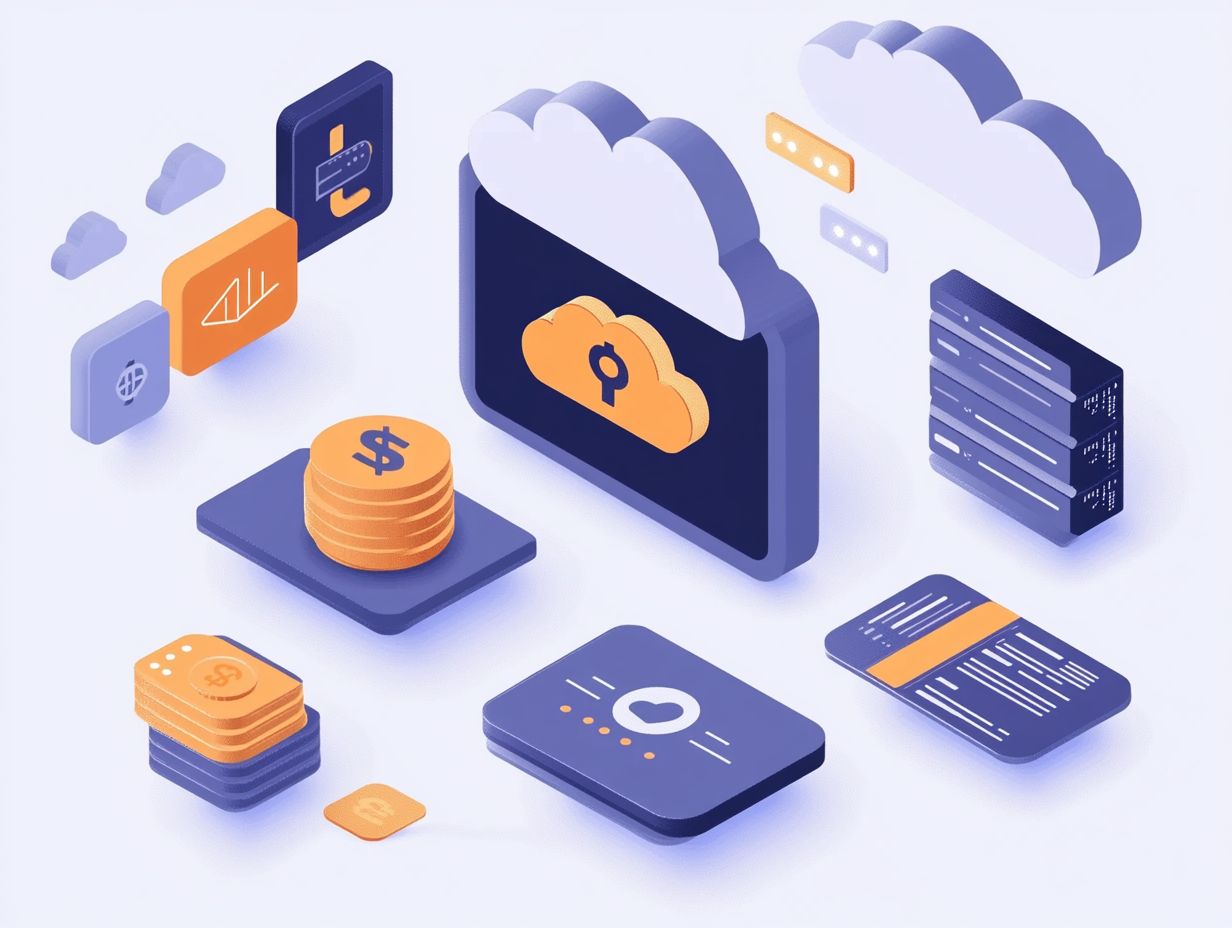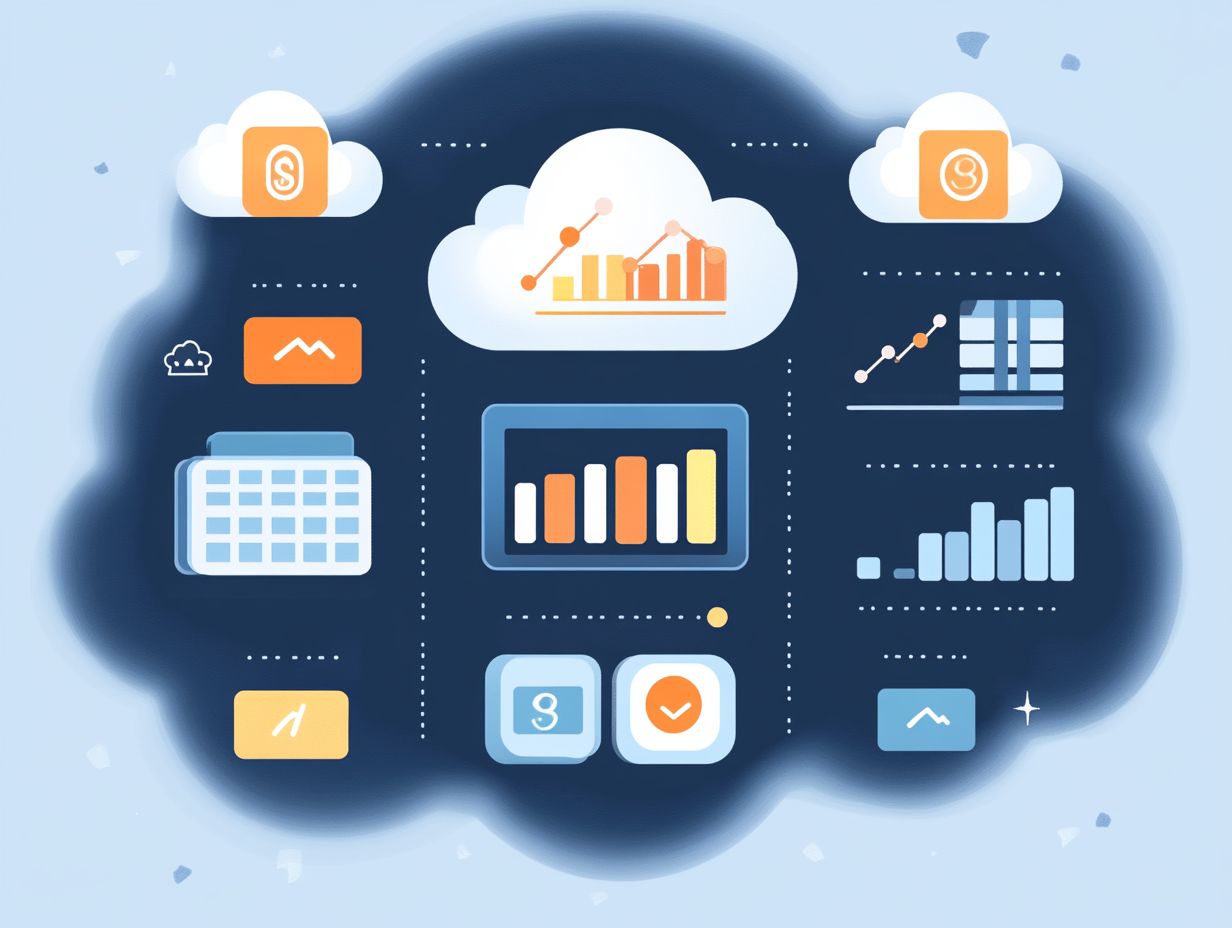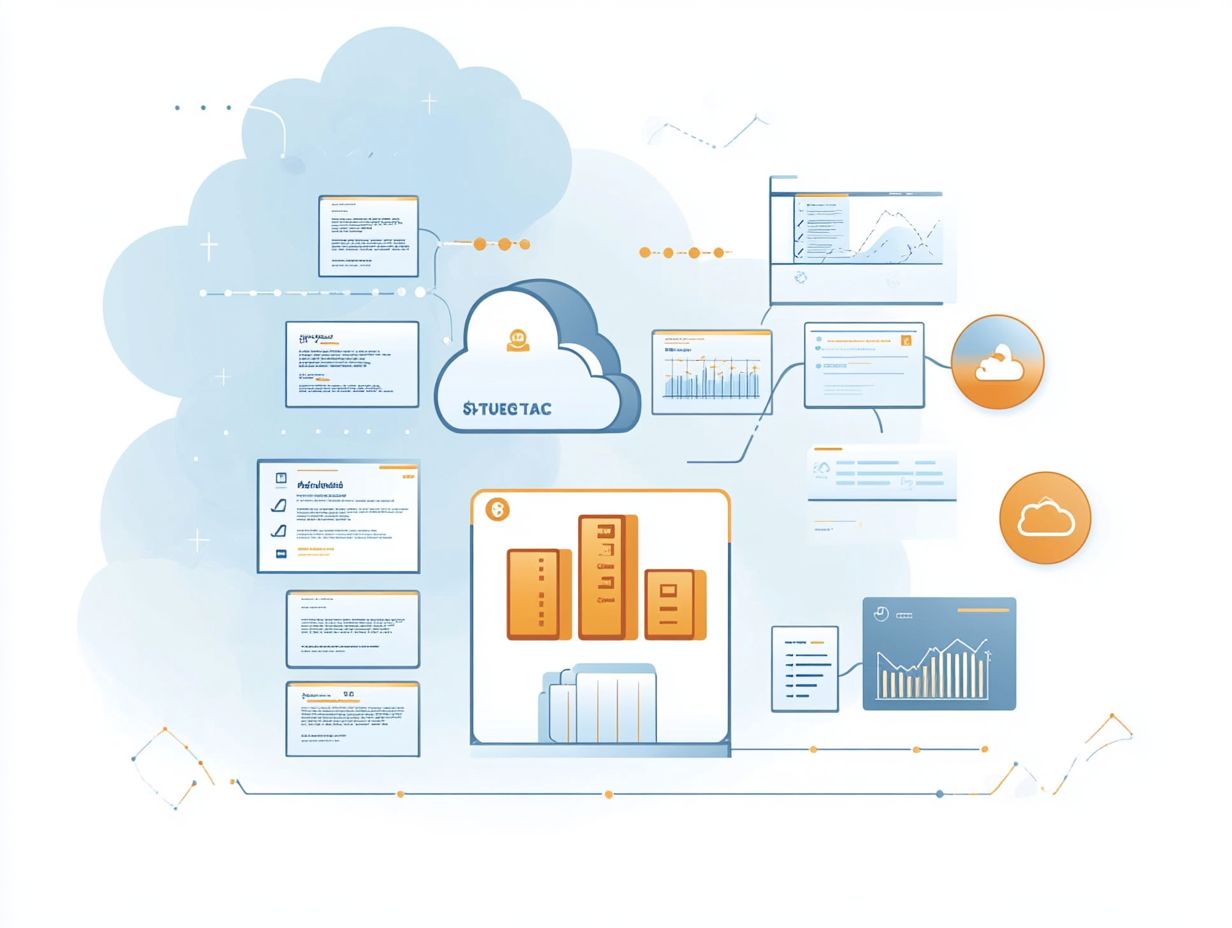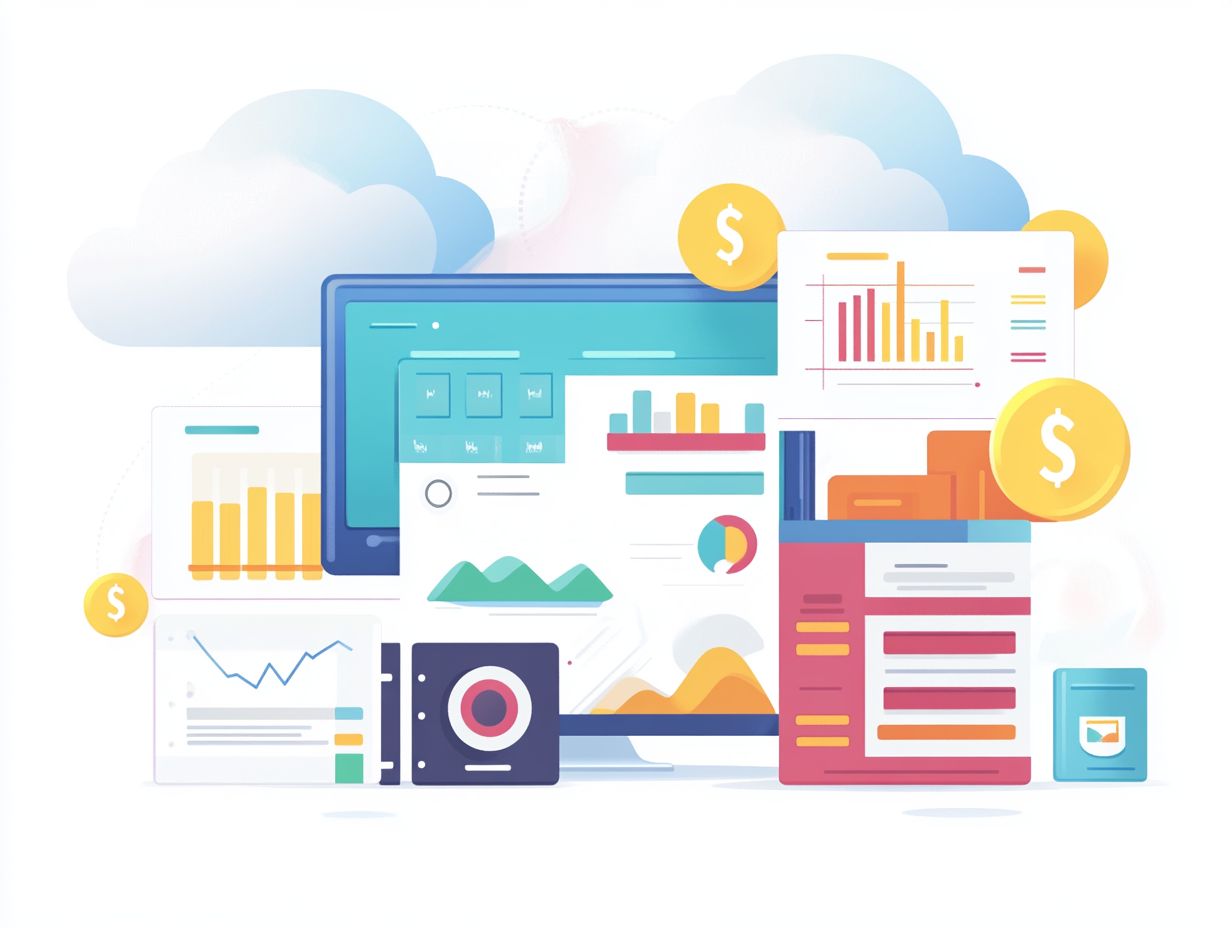Understanding Cloud Storage Pricing Models
In today s digital landscape, cloud storage has become indispensable for both individuals and businesses. Get ready to explore!
However, navigating the array of pricing models can feel quite overwhelming. This article delves into the essentials of cloud storage, examining key pricing models pay-per-use, subscription, and flat-rate while shedding light on the factors that influence costs.
Whether you’re aiming to optimize your storage solutions or simply seeking clarity on your options, this piece will equip you with the insights needed to make informed decisions and effectively manage your cloud expenses. Understanding these models now can save you money tomorrow!
Contents
- Key Takeaways:
- Overview of Cloud Storage
- Types of Cloud Storage Pricing Models
- Factors Affecting Cloud Storage Pricing
- Choosing the Right Pricing Model
- Tips for Managing Cloud Storage Costs
- Frequently Asked Questions
- What are cloud storage pricing models?
- How does pay-per-use pricing work for cloud storage?
- What is a subscription-based pricing model for cloud storage?
- How does tiered pricing work for cloud storage?
- What factors should I consider when choosing a cloud storage pricing model?
- Are there any additional fees to consider with cloud storage pricing models?
Key Takeaways:

Understanding cloud storage pricing models is essential for managing costs and choosing the right model for your needs. Factors such as storage capacity, data transfer, and additional services can greatly impact the cost of cloud storage.
To manage costs effectively, consider optimizing storage usage and regularly monitoring and adjusting usage to fit your needs.
Overview of Cloud Storage
Cloud storage represents a transformative technology, granting you the ability to save, access, and manage your data securely over the internet.
By tapping into the resources of leading cloud providers like AWS, Azure, and Google Cloud, you can streamline your data management processes. This cutting-edge approach gives businesses the power to harness multiple cloud services, enhancing scalability, data durability, and security.
It ensures that your critical files are not only safely stored but also readily accessible whenever you need them. As organizations increasingly turn to cloud services, grasping the fundamentals of cloud storage becomes crucial for optimizing performance and controlling costs.
What is Cloud Storage?
Cloud storage is a powerful technology that allows you to store your data online through a network of remote servers hosted on the internet. This offers you effective data retrieval and virtual storage solutions, complete with high-level security measures that keep your data safe.
This innovative approach to data management enables you to easily access, manage, and share your information from virtually anywhere with an internet connection. Unlike traditional storage methods that depend on physical hard drives and local servers, cloud storage utilizes a distributed architecture that enhances reliability and scalability.
You can enjoy the flexibility of only paying for the storage you actually use, along with the peace of mind that comes from automatic data backups safeguarding your critical information.
As you increasingly rely on digital solutions, the ability to seamlessly integrate various storage options boosts your productivity and strengthens security measures to protect sensitive data from unauthorized access.
Types of Cloud Storage Pricing Models
Understanding the different cloud storage pricing models is essential as you consider adopting cloud solutions. For insights on this topic, understanding the pricing structures of cloud providers can help clarify models such as pay-per-use, subscription, and flat-rate, which provide flexibility and can significantly impact your overall cloud cost management.
The latest Flexera report highlights this insight, emphasizing the importance of making informed decisions in this area.
Pay-Per-Use Model
The pay-per-use model in cloud storage allows you to pay only for the resources you actually consume. This makes it a compelling choice for businesses that prioritize cost savings and scalability, especially when navigating fluctuating data demands.
This flexible pricing structure enables you to allocate your budget more efficiently, freeing you from the constraints of long-term contracts or the burden of paying for unused storage. It gives you the power to scale your cloud usage in real-time, which is particularly advantageous for startups or projects with unpredictable workloads.
This model offers significant benefits, but it also has challenges. Continuous monitoring of your usage becomes essential to prevent unexpected expenses from sudden spikes in data consumption.
This model truly shines in scenarios like seasonal businesses that face varying demands or companies testing new applications where usage patterns are uncertain.
Take time to assess your cloud storage needs or consult with a professional for tailored solutions!
Subscription Model

The subscription model offers you a fixed storage capacity for a recurring fee. This ensures consistent access and robust customer support while meeting specific data retention needs for your business.
This approach simplifies your financial planning and brings peace of mind with predictable costs. You ll likely appreciate the flexibility to scale your storage requirements without the hassle of hefty upfront investments in hardware.
Common use cases include cloud storage solutions, media streaming services, and software applications. All are designed to boost your operational efficiency.
The growing popularity of this model is no accident! It allows you to budget resources effortlessly while reaping the benefits of additional services like automated backups and enhanced security features. This level of tailored support makes the subscription model a compelling choice for both organizations and individual users alike.
Summary: The subscription model provides fixed pricing, flexibility, and valuable services, making it ideal for businesses aiming for predictable costs.
Flat-Rate Model
The flat-rate model in cloud storage provides you with a predetermined amount of storage for a fixed price. This offers the budget predictability necessary for effective financial planning and compliance.
This pricing structure is particularly appealing for startups and small to medium-sized enterprises. It simplifies financial planning by locking in costs.
You can allocate resources effectively without the unpredictability of usage-based fees. This makes it a compelling option if your storage needs are consistent.
However, if your requirements fluctuate, this model may not be the best fit. You risk overpaying for unused capacity or feeling constrained by fixed limits.
By understanding your specific needs, you can determine whether the flat-rate approach aligns with your strategic goals.
Summary: The flat-rate model offers cost predictability but may not be suitable for fluctuating storage needs.
Factors Affecting Cloud Storage Pricing
Several key factors greatly influence cloud storage pricing. These include:
- Storage capacity
- Data transfer
- Network usage
- Additional features or services
Understanding these elements is crucial, especially for businesses that prioritize disaster recovery and effective data management.
Storage Capacity
Storage capacity plays a crucial role in cloud storage pricing. It directly impacts how much data you can store and is often the backbone of tiered pricing models designed to cater to diverse needs.
The importance of storage capacity becomes even clearer as your business experiences fluctuations in data demands. You must evaluate which tier aligns best with your operational requirements.
Companies managing unstructured data like multimedia files, documentation, and log files often find themselves navigating intricate pricing structures to optimize costs.
This careful consideration influences not just your budget allocation but also your ability to scale resources in response to shifting workloads. Grasping these tiered offerings is essential for effective data management and maximizing your return on investment.
Summary: Storage capacity is vital for pricing and affects budgeting and scalability in response to data needs.
Data Transfer and Network Usage
Data transfer and network usage are pivotal in determining cloud storage costs. They can lead to extra charges that may hinder your ability to comply with regulations especially in industries with stringent security requirements.
These fees can add up rapidly, particularly if your business frequently shifts large volumes of data in and out of the cloud. For instance, managing extensive datasets may result in significantly inflated monthly expenses due to these charges.
Compliance factors, such as adhering to GDPR or HIPAA regulations, introduce another layer of complexity. You need to consider not only how often your data is accessed but also how it s shared.
Understanding and managing the financial implications of extra charges and regulatory mandates is crucial for optimizing your cloud storage budget. Don’t wait to reassess your data retrieval strategies!
Summary: Data transfer costs can escalate quickly, so effective management is essential for compliance and budget optimization.
Additional Features and Services

Additional features and services such as enhanced data security protocols, disaster recovery options, and strong customer support can significantly sway your cloud storage pricing. Any business serious about data protection would appreciate this added value.
These features safeguard against data breaches and losses. They also improve operations and enhance user experience.
If you prioritize seamless access and rapid recovery during unexpected disruptions, investing in these features can ultimately save you both time and money.
Strong customer support ensures that any hurdles are addressed swiftly. This allows your organization to maintain productivity without skipping a beat.
When you evaluate cloud storage costs, consider how these additional offerings can justify higher price points while delivering greater overall value.
Choosing the Right Pricing Model
Selecting the ideal pricing model for cloud storage requires careful attention to several factors.
Consider user access needs, data analytics capabilities, and your organization s unique requirements.
Doing so ensures optimal cost efficiency and performance that aligns with your objectives.
Considerations for Different Use Cases
When evaluating cloud storage solutions, it’s crucial to consider your organization’s specific use cases such as business intelligence needs, real-time collaboration, or managing sensitive financial records to determine the most suitable pricing model.
If your company heavily invests in analytics, you may prioritize high-speed access and advanced data processing features. This focus could lead you to choose a premium plan that ensures enhanced performance.
If your organization is centered around collaborative projects, scalable storage options can accommodate fluctuating team sizes and unpredictable data requirements. This might translate into a pay-as-you-go pricing scheme.
If you manage sensitive information, like financial data, lean toward a pricing model that offers robust security measures and compliance with industry regulations. While this often means a higher cost, it provides invaluable peace of mind.
Ultimately, understanding your organization’s specific needs and workflows will guide you toward the most appropriate pricing strategy.
Tips for Managing Cloud Storage Costs
Effectively managing cloud storage costs is crucial for organizations that want to maximize their IT budgets.
Implementing strategies like optimizing storage usage, utilizing pricing calculators, and enhancing cloud cost management practices can unlock substantial benefits and contribute to greater financial efficiency.
Optimizing Storage Usage
Optimizing your storage usage in the cloud is essential for your business, especially when navigating unstructured data and the need for effective data analytics.
By implementing strategies like data categorization, you can organize your information more effectively. This ensures high-priority files are easily accessible while less critical data is archived or stored in a tiered system.
Archiving not only frees up valuable space but also helps maintain compliance with regulatory requirements. Leveraging analytics tools offers insights into your storage patterns, enabling you to identify redundancies and optimize resources further.
By emphasizing these methods, you could see substantial savings and improved operational efficiency, leading to a more streamlined and cost-effective cloud storage environment.
Monitoring and Adjusting Usage

Regularly monitoring and adjusting your cloud storage usage is crucial for effective cloud cost management. This lets you adjust how long you keep data and ensures you have the necessary support for your evolving needs.
Proactively managing your storage helps you stay within budget and enhances overall efficiency by identifying unused resources and optimizing your storage solutions.
By using tools that help you understand how you use storage, you gain valuable insights into usage patterns, enabling accurate forecasts of your future storage needs.
A combination of built-in cloud provider dashboards and third-party monitoring applications can further streamline this process.
Periodic audits of your data classification and lifecycle policies empower you to adjust strategies, ensuring compliance and optimal resource allocation as your objectives and data requirements evolve.
Frequently Asked Questions
Here are some common questions about cloud storage pricing models.
What are cloud storage pricing models?
Cloud storage pricing models refer to the various ways cloud storage providers charge for their services. These typically include pay-per-use, subscription-based, and tiered pricing plans.
How does pay-per-use pricing work for cloud storage?
With pay-per-use pricing, users are charged based on their actual storage usage. The more data you store, the higher your bill. This option is flexible and cost-effective for those with fluctuating storage needs.
What is a subscription-based pricing model for cloud storage?
Subscription-based pricing involves paying a monthly or yearly fee for a set storage amount. This model is often preferred by businesses or individuals with consistent storage needs, offering predictability and additional features.
How does tiered pricing work for cloud storage?
Tiered pricing includes different pricing levels based on storage usage. For instance, a provider may have plans for 100GB, 500GB, and 1TB of storage, each with its own corresponding price. This model suits those who can estimate their storage needs and want more control over costs.
What factors should I consider when choosing a cloud storage pricing model?
When selecting a cloud storage pricing model, make sure to think about your budget, storage needs, and the flexibility and features each model offers. It s also helpful to compare prices between providers and read reviews to find the best fit.
Are there any additional fees to consider with cloud storage pricing models?
While most cloud storage providers have straightforward pricing, it s important to read the fine print and be aware of any additional fees. These may include charges for data transfers, API requests, or data retrieval. Factor in these potential costs when comparing pricing models.






